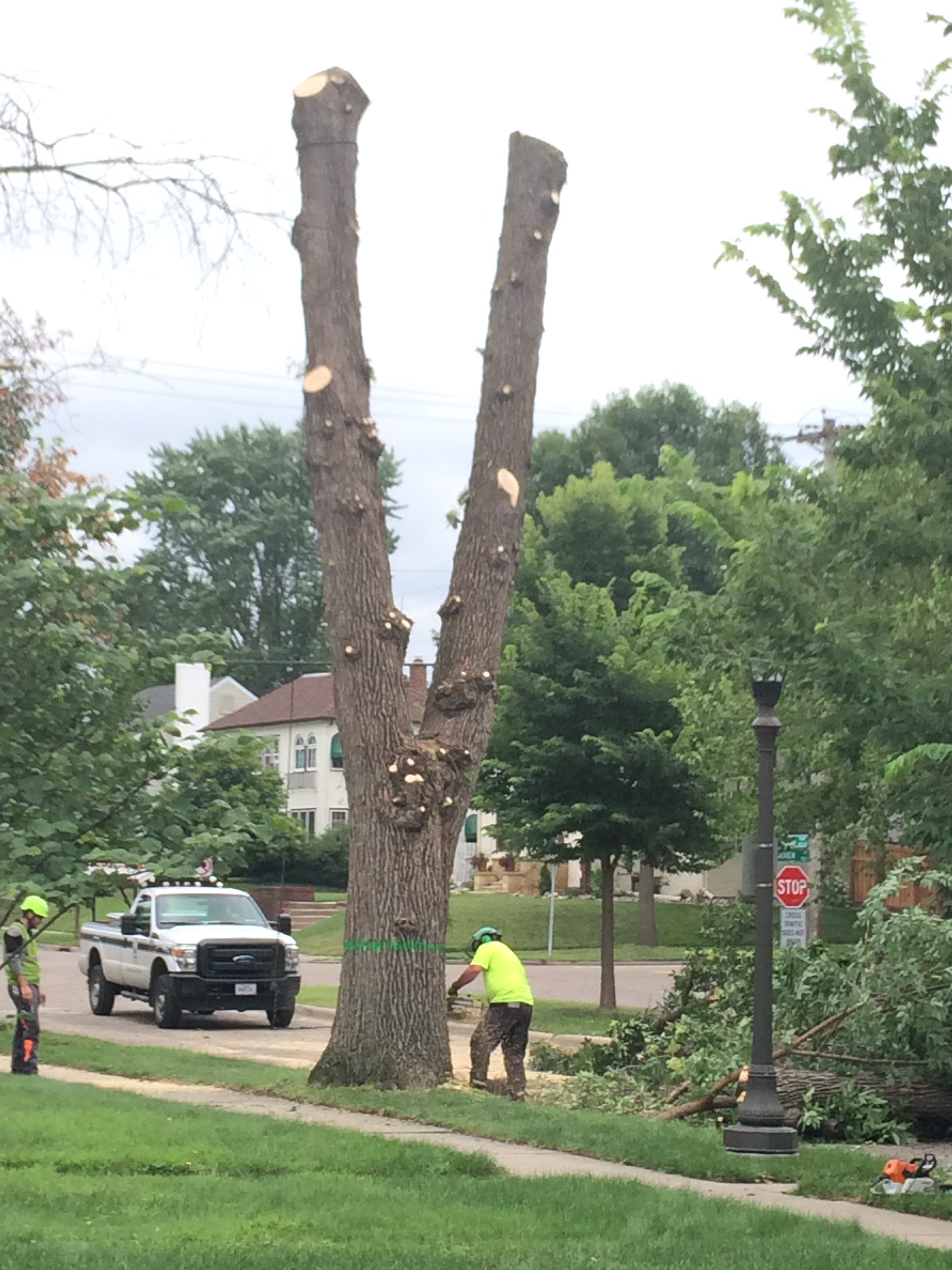Saturday I had a chance to attend part of the Minnesota Master Gardener Conference at the University of Minnesota’s St. Paul campus. The campus is about a mile north of the St. Anthony Park neighborhood where Minnesota had its first confirmed infestation of emerald ash borer. Two borers recently were discovered in traps on the campus. So it seemed an appropriate place to be getting an update on this pest.
Entomologist Bob Koch, who has been one of the Minnesota Department of Agriculture’s point people on the borer, noted the importance of slowing the advance of the emerald ash borer. With about 900 million ash trees, the state would suffer economic, environmental and aesthetic damages if the borer spread rapidly. Moreover, unlike many other pests, borers are just as likely to attack a healthy ash tree as a sick one. Because ash trees are somewhat prone to illness and pests anyway, finding the borer has been a challenge. Generally, homeowners should look for these four signs of ash borer infestation on their trees:
- Canopy thinning — when the top of your tree looks like it’s dying;
- Sprouting at the base of the tree;
- Woodpecker feeding — of course, woodpeckers could be feeding on lots of bugs, but the woodpeckers have proven to be pretty reliable, Koch said.
- Bark splitting.
The borers themselves leave behind galleries in the cambium layer directly under the bark of the trees where their larvae eat and grow, and sometimes borers can be found through the presence of D-shaped exit holes that the grown borers make when they leave the tree of their birth to mate and spread havoc elsewhere. Finding the holes is not as easy as it sounds, Koch said, and even on trees with a known infestation trained entomologists have difficulty detecting the holes. In other words, this is one tough, sneaky bug.
For more information on identifying whether you have an ash, check out this Michigan extension guide.
Master Gardeners also reported a lot of confusion about whether to treat for emerald ash borer with insecticides and when to treat. Generally, the ag department advises homeowners not to treat unless you live within 15 miles of an infestation — so basically, if you are in the Twin Cities, you might want to consider it. If not, probably not. The next question is what to use. There are a couple of chemical choices, but none of them have been tested on ash borer over a long period of time. Imidacloprid is the most commonly used active ingredient. (Koch noted that a chemical called Tree-age (Emanectin benzoate) has had better than average results.) Some insecticides are applied as soil drenches, but it seems the more preferred application is by trunk injection in early May to mid-June, which is the time the borers emerge from the tree. For more information on insecticide options, check out the downloadable bulletin put together by the North Central Integrated Pest Management Center, which is a co-op of university bug experts.
Here’s what I took away from this helpful program. 1) Know if you have an ash tree and how much you care about it. I’ve got two and one of them I would hate to lose. If I lost the other, it would be too bad, but not a big deal. 2) Know the signs of ash borer infestation and watch your trees. 3) Start thinking about whether you want to treat your trees and how you would do that. We were approached about doing a soil drench of imidacloprid this fall and I said no. I’m not within 15 miles of the infestation and, if I do treat, the trunk injections seem more targeted and less likely to affect other plants or animals.
Finally, kudos to the U, the ag department, the feds and all the local government agencies around Minnesota who have really gotten on top of this issue. Minnesota had several years to prepare for EAB and clearly that time was used well. The quick action in St. Paul (all the infested trees were cut and incinerated within days), the thousands of purple traps around Minnesota, training folks like the Master Gardeners–these are all steps that will protect trees.

Thanks, Mary, for the comments on the EAB and the plug on the conference. Bob Koch was a hit – great info, great delivery, great resource – according to our MGs who attended. EAB is so visible in the news, on billboards, in literature and articles, that its critical that folks know how to address the problem. Many thanks to Bob, the MDA, and our own Extension Entomologist, Jeff Hahn, for keeping us informed. And yeah! for the Master Gardeners, volunteers around the state, who have been trained as First Alert volunteers. Very cool, very helpful!
Thanks for this informative update. We were resigned to losing our ash but now I see we can do some things to save it. Yippee! Keep up the informative and local posts – love the Minnesota-specific information you offer.
Kelli
http://alittlestpaulgarden.wordpress.com